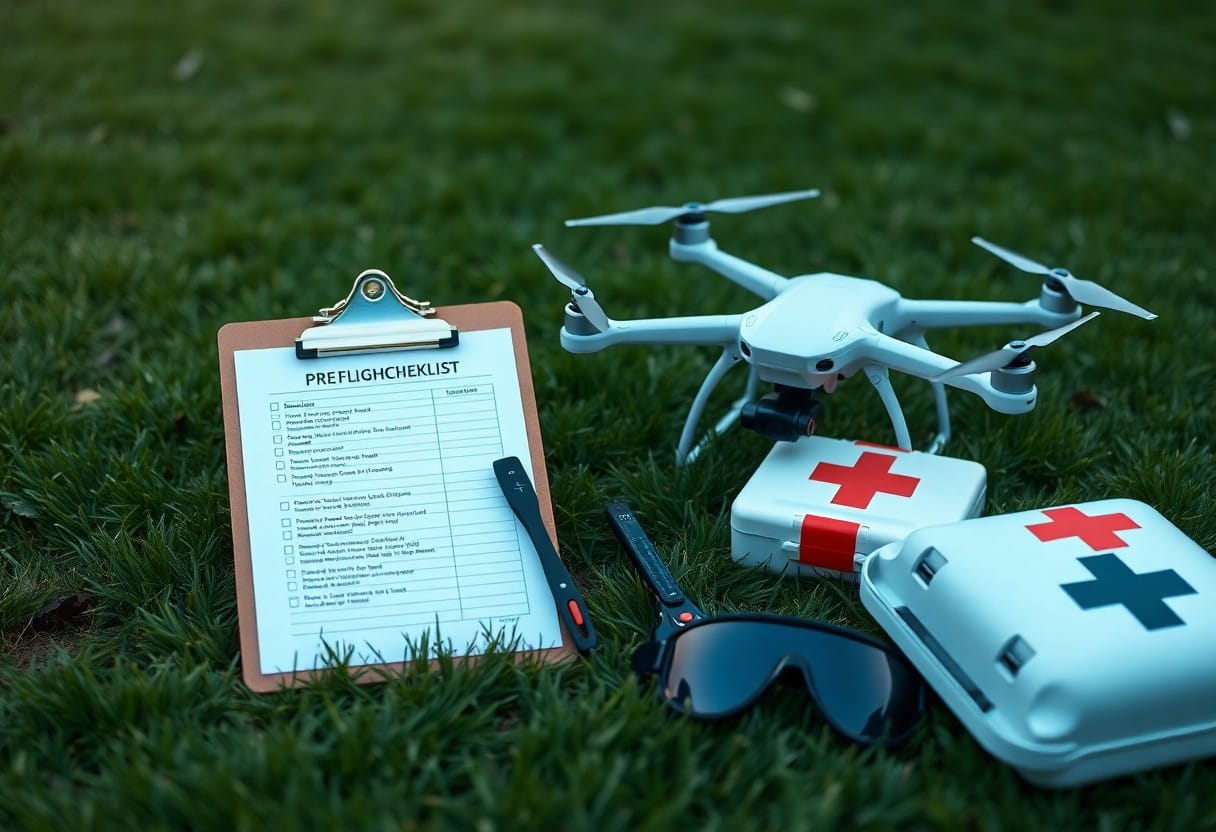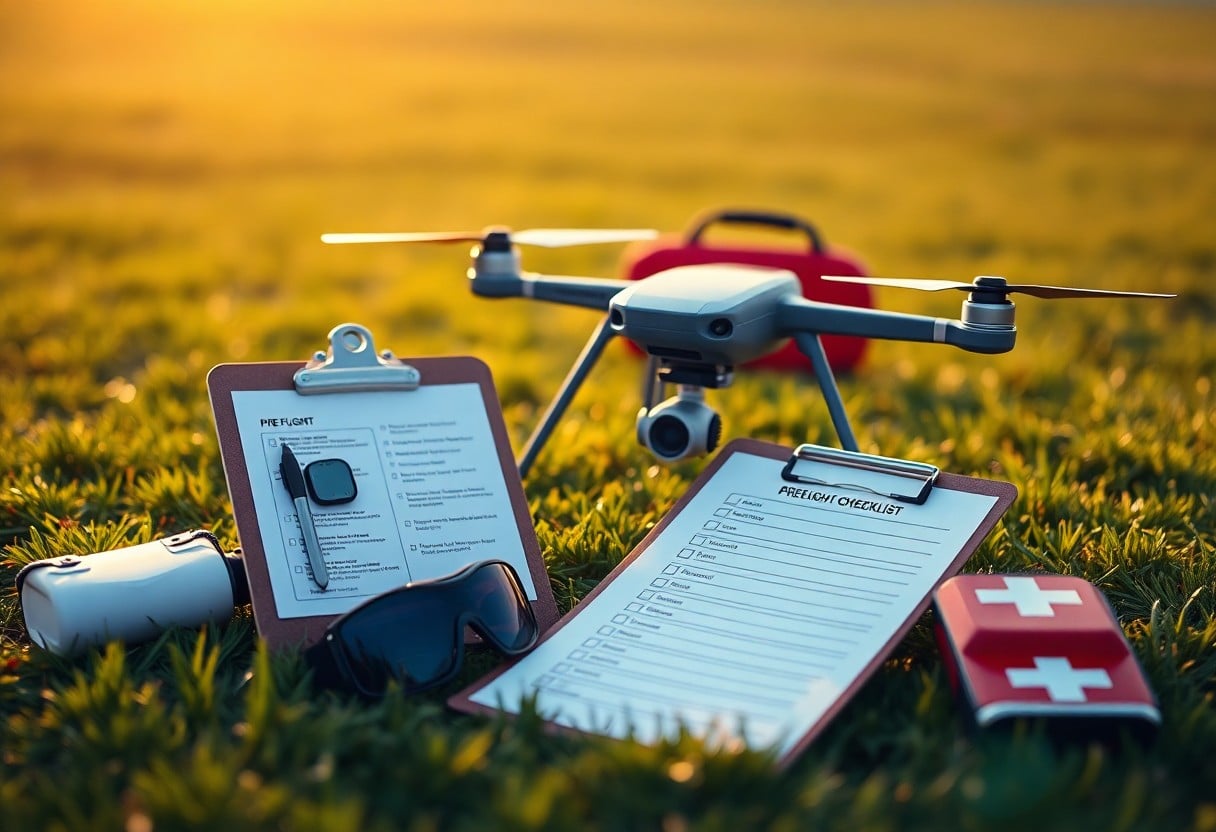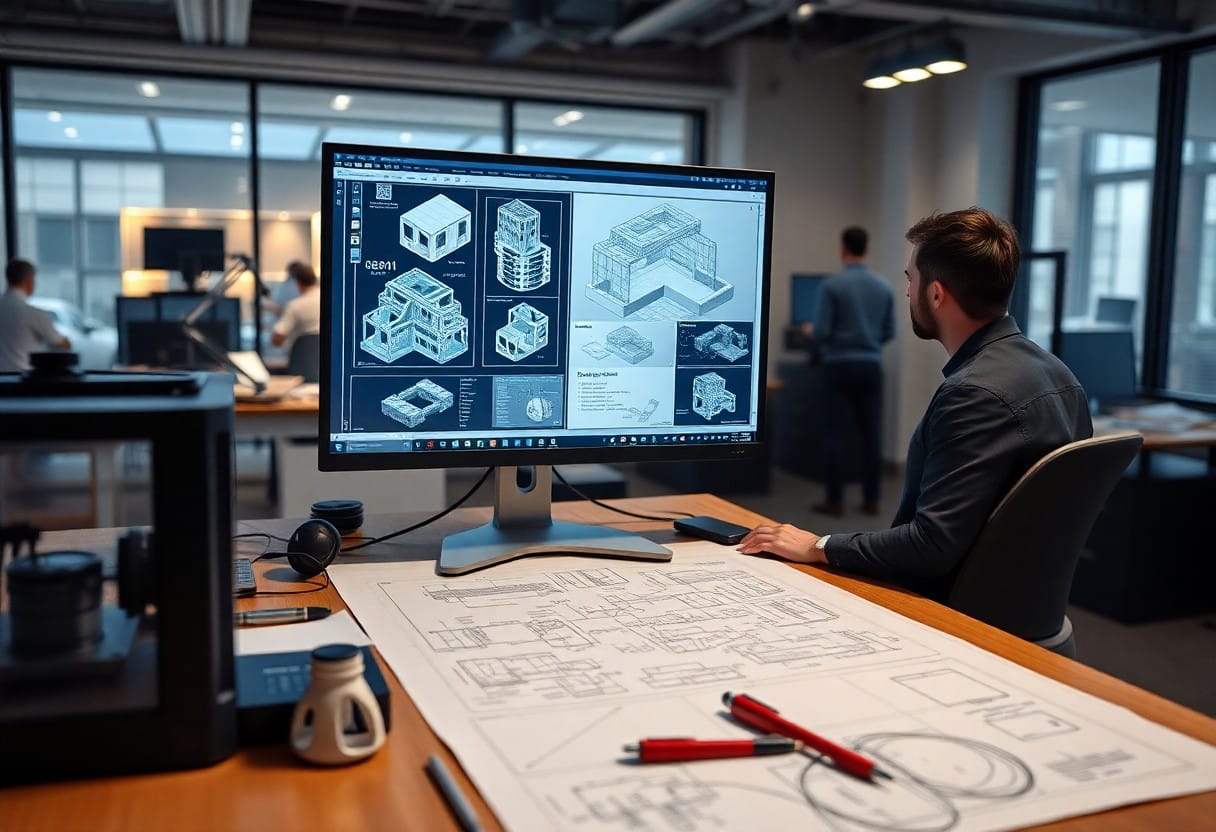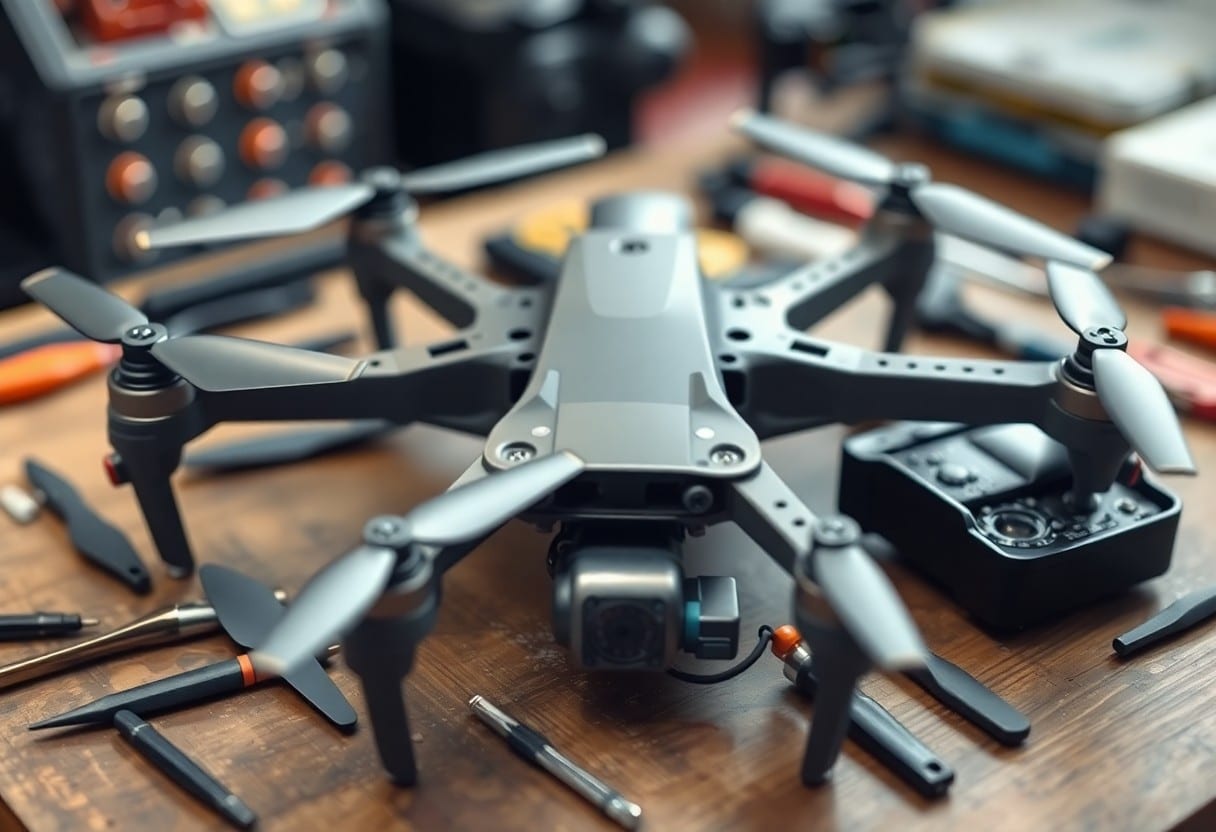What should be included in the pre-flight checklist for a drone?
Before operating your drone, you must ensure that all preparations have been made to improve safety and flight efficiency. Make aComprehensive checklistIt is crucial to includeBattery Status, Software Updates, Geographic Area Restrictionsup toEquipment Integrityand other elements. This not only reduces the risk of accidents, but also ensures that your drone is running smoothly and at peak performance. Remember, a thorough inspection will set the stage for your flying experience.Security and successThe basis of the
Key Points:
- Battery check:Verify that the battery is fully charged and that the spare battery is available.
- Safety check:Check all parts of the drone to make sure they are not damaged or loose.
- Flight range:Confirm any no-fly zones or restricted areas within the flight plan area.
- Weather conditions:Check the prevailing weather conditions to ensure that you are fit to fly.
- Controller Check:Check that the remote control is working properly and that there is no interference.
- Photography equipment:Check that the camera or other equipment is properly installed and functioning properly.
- Return procedures:Confirm the setting of emergency return procedures and altitude limits.
Understanding Legal Requirements
Before operating a drone, it is important to understand the relevantLegal requirementsIt's important. This not only ensures that your flight is safe, but also avoids possible legal problems. Each country and region has specific regulations regarding the use of drones and it is important that you familiarize yourself with these requirements to avoid fines or other legal consequences.
Registration and Licensing
In many countries, you will need to pay for your drone.RegistrationThe Government of the Hong Kong Special Administrative Region (HKSAR) has also been given the rightOperating LicenseThese requirements vary from region to region. These requirements vary from region to region, so you should check your local laws and regulations to make sure you have all the documentation you need to operate your drone legally.
Airspace
When operating a drone, you need to knowAirspaceThese regulations guide the restrictions on the flight of UAVs in different airspaces. UAVs are not allowed to fly in specificNo Fly Zone(Flying in airspace (e.g., near airports, government buildings, etc.) can lead to danger and legal problems. Make sure you check all relevant airspace restrictions before each flight.
When planning a drone flight, you must check the localAirspace MapTo get the most up-to-date airspace information. This not only helps you avoid no-fly zones, but also ensures that you're operating in the right airspace to minimize the risk of collisions with other aircraft. Remember to check the weather conditions and the condition of ground facilities to further ensure your flight safety. Following these guidelines will help protect your safety and the safety of others.suretyThe

Equipment Inspection
It's important to thoroughly inspect your equipment before operating your drone. You should carefully check all components, including the camera, propellers and stabilizers, to ensure that every detail is working properly. Learn aboutA Step-by-Step Guide to Understanding Drone Components - 6 Key InsightsThis will help you to be well prepared before you fly.
Drone Condition Check
Before starting the drone, you need to make sure it looks and functions properly. Check the body for visible damage, such as cracks or abrasions, and make sure all connections are secure. This step is essential to ensure that your drone remains stable during operation.suretyIt is of paramount importance.
Battery Status and Performance
The battery is the heart of the drone's operation, and you must verify its state of charge and performance. Check that the battery is fully charged and shows no signs of expansion or leakage. These problems can affect flight time and increase the risk ofSecurity RisksThe
Ensuring that your batteries are in good condition is key to improving the safety of your drone's operation. Battery performance is especially important when it comes to full charge and idle time. Insufficient charging time or long periods of unused batteries can lead to degradation of performance or toAccidental power failureCheck the status of your batteries before each flight. Checking the status of your batteries before each flight prevents you from encountering problems in the air and ensures a smooth flight.suretyrespond in singingsmoothlyThe
Pre-flight Setup
Before operating a drone, doPre-flight SetupIt is very important. This includes checking that the connection between your drone and the remote control is working properly and making sure all parameters are set correctly to avoid surprises. Don't overlook this step as it is crucial to ensure safe flight.
GPS Calibration
Before flying, you must performGPS CalibrationThis will not only enhance the accuracy of the navigation of the drone, but also help to stabilize it in case of unexpected situations. This not only enhances the drone's navigational accuracy, but also helps to stabilize it in the event of an unexpected situation. Be sure to do this in an open and undisturbed area.
Firmware Updates
CheckFirmware Updatesis another step that should not be overlooked. Outdated firmware can cause your drone to degrade in performance or even malfunction dangerously. Make sure your drone is running the latest software for optimal performance and safety.
Regularly checking for firmware updates can enhance the functionality of your drone, fix knownloopholeand improve the flight of thestabilityand safety. Ignoring this step could lead to unpredictable errors or even damage to your drone. Keeping your firmware up to date ensures that you have the latest technical support and the best possible flying experience.
Environmental Assessment
Prior to conducting drone operations, theEnvironmental AssessmentIt is an important step to ensure safety and efficiency. You need to carefully examine the environment of the flight area to anticipate possible problems and challenges so that you can plan appropriately.
Weather conditions
Before you fly, you need to knowCurrent and Forecast Weather Conditions. Factors such as wind speed, rainfall, visibility and temperature may affect the maneuverability of the drone, ensuring that operations are carried out in suitable weather to avoid accidents.
Operation Area
Learn about your upcoming flightOperation AreaIt's important. You need to review possible obstacles, terrain features, and surroundings to avoid drone flights in high-risk areas.
You should also consider the surroundingpopulation densityrespond in singingConstruction ActivitiesThese factors will have a direct impact on the safety of your flight. For example, in crowded urban areas, drone operations may be at higher risk, whereas it is relatively safe to operate in open farmland. It is also important to be aware of ground activities and possible legal restrictions to minimize unnecessary hassles. Staying alert and prepared will help ensure your flight is successful and safe.

Security Agreements
Before proceeding with drone operations, you must follow a series ofSecurity AgreementsTo ensure safety during flight. It is important to make sure that your drone is in good condition, has sufficient batteries, and that a weather assessment has been conducted. You can refer to8 Steps to Perfecting Your Drone Navigation SkillsCome for a thorough inspection. In addition, observe local laws and safety regulations to ensure that flying does not pose a hazard.
Emergency Procedures
When operating the drone, prepareEmergency ProceduresIt is a must. It is important to design a plan in advance to deal with unforeseen circumstances, such as loss of control of the drone or unexpected weather. This reduces unnecessary risks and improves your ability to respond.
Communication Strategy
wellCommunication StrategyThe key to successful drone operations. Before flying, you should ensure that information is clearly communicated with your team, including the mission, expected route and roles. In addition, you need to maintain good communication with any relevant parties or people you need to work with to avoid misunderstandings and enhance safety.
In your communication strategy, the focus is on ensuring that each member understands theirRoles and Responsibilities. You can hold regular meetings and check that all important information is being adequately communicated. Maintaining real-time communication by adopting clear instructions, using gestures or walkie-talkies can help you respond quickly in emergency situations and ensure that all operations run smoothly.

Flight Program Development
Before operating your drone, it is important to have a detailed flight plan. This will not only increase your productivity, but also enhance safety. You can refer to thisHow to cross the no-fly zone effectively?This is to ensure that you are fully prepared for each flight.
Identify Objectives
Before you start planning your flight, you must first define your operational objectives. This may include photographing specific landmarks, conducting a terrain survey, or collecting imagery. Understanding your objectivesIt helps you plan your flight path and set flight parameters more efficiently.
Planning of flight paths
Against the flight of drones.Planning your flight path is crucial!This not only affects operational efficiency, but also has a direct bearing on flight safety. When planning, you need to take into account the surrounding environment, such as high-rise buildings and other obstacles, as well as ensuring that the flight is legal and follows the relevant regulations.
When planning your flight path, it is recommended that you use a map tool or specialized flight planning software so that you canClearly mark take-off points, target points and avoidance of hazardous areas.You should also consider the weather conditions and wind speed. You should also consider weather conditions and wind speed, which can affect the stability and safety of your drone. Detailed route planning ensures that your mission is not only accomplished efficiently, but also reduces the risk of accidents.
What should you include in your pre-drone checklist?
There are a few key things you should make sure to check before proceeding with drone operations. First, make sure the drone's batteries are charged and stable so you don't lose power during flight. Second, check that your GPS and other navigation systems are functioning properly. Also, check the operation of your remote control and any spare equipment. Finally, check the current weather conditions and legal restrictions in your flying area to ensure your flight is safe and secure. A proper check will help enhance your experience and ensure a safe flight.
Frequently Asked Questions
Q: What should be included in the takeoff checklist for drone operations?
A: The pre-takeoff checklist should include the following items: check the drone's battery level, make sure all propellers are free of damage, verify that the GPS signal is good, check that the remote control is functioning properly, update the firmware, observe the weather conditions, and make sure that the flight area is free of obstacles.
Q: How do I check the battery level of my drone?
A: Check the battery level via the display or remote control on the drone to ensure that it is sufficient to complete the scheduled flight and remember to bring extra batteries.
Q: Why do I need to check my propeller?
A: The propeller is the main propulsion component of the drone. Inspecting it for damage and dislodgement will ensure the safety of the flight and prevent malfunctions during the flight.
Q: What is the importance of GPS signal checking?
A: A good GPS signal ensures correct positioning and prevents drifting of the drone, as well as guarantees navigation accuracy and stability during flight.
Q: How can I confirm that the remote control is functioning properly?
A: Verify that the remote control is functioning properly by turning on the remote control and testing the levers and buttons to make sure they are responding correctly.
Q: Why should I update the firmware?
A: Updating the firmware can improve the performance and stability of the drone, as well as fix any potential security vulnerabilities, so it is best practice to check the firmware version before each takeoff.
Q: How do I assess the weather conditions in my flight area?
A: You can assess the weather conditions in your flight area by checking the weather forecast, observing the cloud cover and wind speed to ensure that you choose a safe flight time to minimize the danger caused by weather changes.




